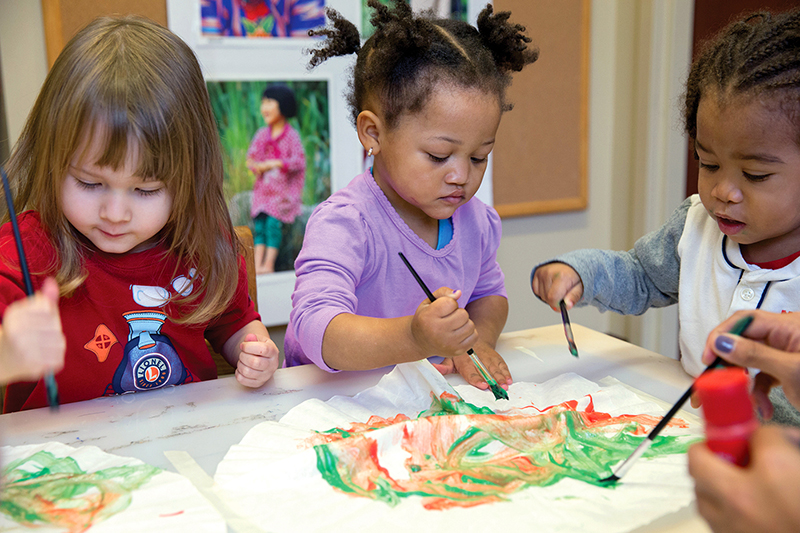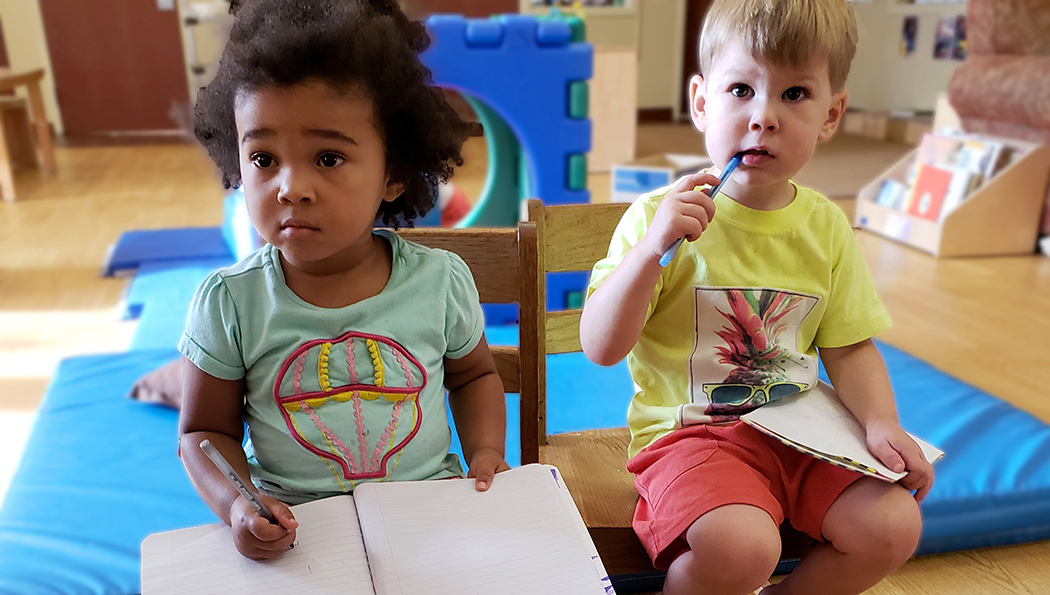Our Broken Child Care System and How to Fix It, Part 3
This series was originally posted by Early Learning Network.
In this three-part series, Dr. Laura Justice — executive director of the Crane Center for Early Childhood Research and Policy and Schoenbaum Family Center at The Ohio State University (OSU) — surveys the fragmented landscape of child care in the United States, highlighting its vulnerabilities even in the best of times.
In the midst of the COVID-19 pandemic, countless families have lost their care, while child care teachers and administrators have lost their jobs. Families have their kids at home. The industry will be dealt a huge economic blow — and then what?
Justice makes concrete, actionable recommendations for the nation, communities and families.
Child care in the United States is not one system but many, and virtually all of them are failing. In the first two installments of this series, we highlighted what was already wrong with these systems and how the COVID-19 pandemic exposed and exacerbated these shortcomings.
Now comes the hard part. While diagnosing the problems is a necessary step before calling for solutions, fixes that are both sweeping enough and realistic aren’t obvious. We invited three trusted experts to brainstorm with us:
- Stephanie M. Curenton, Ph.D., Associate Professor, Director of The Ecology of School Readiness Lab, and Faculty Director of Early Childhood Community Initiatives, Boston University, Wheelock College of Education & Human Development
- Iheoma U. Iruka, Ph.D., Chief Research Innovation Officer and Director, The Center for Early Education Research & Evaluation, HighScope Educational Research Foundation
- Mary Bratsch-Hines, Ph.D., Advanced Research Scientist, Frank Porter Graham Child Development Institute, UNC Chapel Hill
We are grateful for the suggestions provided by Drs. Curenton, Iruka and Bratsch-Hines, and credit them throughout this piece—which isn’t a step-by-step blueprint but rather a loosely organized pantry of initiatives that we think have real potential. The solutions and suggestions outlined below are not exhaustive, but we believe they represent a sound basis for ongoing dialogue.
Let’s not “waste a crisis.” Let’s use this critical period to re-envision and re-build a system that meets all of our youngest children’s early learning needs.
–––––
Read Part 1 of this series, Before Coronavirus, the U.S. Child Care Landscape Was Already in Crisis
–––––
Read Part 2 of this series, More Bad News for Child Care: The Importance of Not Looking Away
1. Valuing Teachers
Let’s start by acknowledging that all early child-care providers are educators, responsible for much more than providing basic care to children. Paying early educators at a level commensurate with educators in the K-12 system (in terms of base salary, leave and health care) is an important start; ideas for funding this and other necessities are explored below. Even before the pandemic, the issue of pay for early educators was an ongoing concern, but it’s more critical than ever as we re-build our nation’s system. At the very least, until we can make inroads on the issue of salary parity, we simply cannot allow any early educator to be making less than a living wage, given the importance of their work on a day-to-day basis and to the future of our youngest children.
Another aspect of valuing our teachers is equipping them to be more than babysitters. Take the Child Development Associate (CDA) credential, for example. It is an appropriate and valuable credential for aides, but it is not enough for the primary/lead teachers in the room, who should have post-secondary credentials (including the A.A.) that provide training on early brain development, evidence-based curricula, assessment, family connections and culturally responsive practices. Dr. Curenton maintains that tuition forgiveness programs, whereby the government or other entities gradually pay off the student loans of educators as long as they remain in the field, could enhance pathways to additional training for these professionals and shore up the talent pool.
Holding education to a high standard improves child outcomes and also shows respect for the profession. That’s why state quality rating and improvement systems (QRIS) must incorporate theoretically informed measures of quality, such as the quality of talk between educators and children, educators’ responsiveness during interactions and use of evidence-based curriculum supported by scientific research. Dr. Bratsch-Hines adds that that every formal and informal provider (including family-based care; see below) should be registered as a child care provider.

2. Rethinking Funding
The COVID-19 crisis is compelling us to reconsider how we pay for child care and early-learning programs in our country. The HEROES Act, which is stalled in Congress, provides $7 billion—a mere fraction of what’s needed—in dedicated funding for child care through the Child Care and Development Block Grant. Dr. Bratsch-Hines asserts that every single child care setting serving children with under- or non-employed families needs to be subsidized as soon as possible. “There is no way the economy can get started and people get jobs without child care,” she argues.
Beyond the immediate need, this could be an opportunity to harmonize the confusing and contradictory funding streams that fuel the haphazard federal and state programs. They should all follow the same requirements, in terms of eligibility standards, reporting standards, and the like. The child care subsidy system needs to be amended such that subsidies are provided to families regardless of their employment or student status. When parents no longer have qualifying work or school situations, some subsidy programs stop paying child care, which often means pulling children out of care. Dr. Bratsch-Hines calls for a system that maintains and emphasizes child care stability and quality.
Dr. Iruka suggests a universal basic income (UBI) for the workforce. This is a noteworthy counterpoint to Elliot Haspel’s vision for direct cash assistance for families of young children.
Not all funding has to come from the government. Employers could underwrite child care, too, giving them “a competitive advantage in recruiting, retention and organizational performance,” according to Bright Horizons. Companies could also work in coalition to bring more resources to an issue with direct consequences for their bottom line. Build Up San Mateo County even secures unused real estate to expand child care options.
“We need to re-center and re-prioritize child care as something that everyone benefits from,” says Dr. Iruka. “And yes, it means more funding. This may mean taxing everyone to create a general fund.” She points to the Buffet Early Childhood Fund in Nebraska as an example of how this could work.
Every single child care setting serving children with under- or non-employed families needs to be subsidized as soon as possible. There is no way the economy can get started and people get jobs without child care.
3. Embrace Family Care
Dr. Curenton points out that while academics who study early childhood education tend to focus on center-based care, informal or family care is the setting for many young learners. Flexible hours and closer community ties, as well as the dearth of centers in some areas, may explain this preference. She adds that government or philanthropic support for these enterprises, many of which are run by women of color, could take the form of business loans.
Some experts predict that family care will grow even more prevalent in the post-pandemic world. Dr. Iruka notes, “As currently set up, there is not a simple way to find child care, especially if you are non-English speaker, work non-standard hours, are low resourced, etc.” She envisions models that combine child care with home visiting programs like the Nurse Family Partnership to offer more individualized attention.
WeeCare help parents find providers to build up area child care resources. Founder Jessica Chang call it “micro-preschool” and says it’s 40% cheaper than center-based care. While jobs teaching in centers often do not pay a living wage, running these informal child care businesses is a sustainable job. “Day care has to change,” Chang says. WeeCare ramped up support resources to meet the demands of the pandemic, and as a result, 90% of its 2,000 providers have remained open. Quality of education may continue to be an issue with WeeCare and Care.com (which also covers services like housekeeping and dog walking), but curriculum development, paired with continued education for the providers, may alleviate concerns.

4. Explore Other Nontraditional Alternatives
The range of early childhood education settings doesn’t stop with center-based and family care. Creative alternatives may gain traction in the future.
- Iruka points to the New Haven Children’s Ideal Learning District as an example of a public-private partnership that draws upon resources throughout the community.
- In the new world of work emerging in the wake of the pandemic, Child Care Cooperatives might make more sense as parents take advantage of flexibility to work from home or to set nontraditional schedules.
- Online education modes like Waterford UPSTART, which Early Learning Nation recently called “the next best thing to being there,” could become more attractive for some families.
- A few communities have even experimented with co-locating eldercare and daycare. Intergenerational partnerships like this one in Pleasant Hill, California, this Jewish institution outside of Boston and this Kansas school where Teacher of the Year Tabatha Rosproy works could potentially make use of untapped assets all over the country.
Systemic change won’t happen without introspection, debate and imagination. Thanks to the disruptions wrought by the pandemic, we have been presented with the ideal moment for fresh thinking and a willingness to question long-held beliefs about the best ways to educate the youngest Americans. As some have argued, it’s never a good idea to “waste a crisis” suggesting that we use this critical period to truly re-envision and re-build a system that meets all of our youngest children’s early learning needs.

